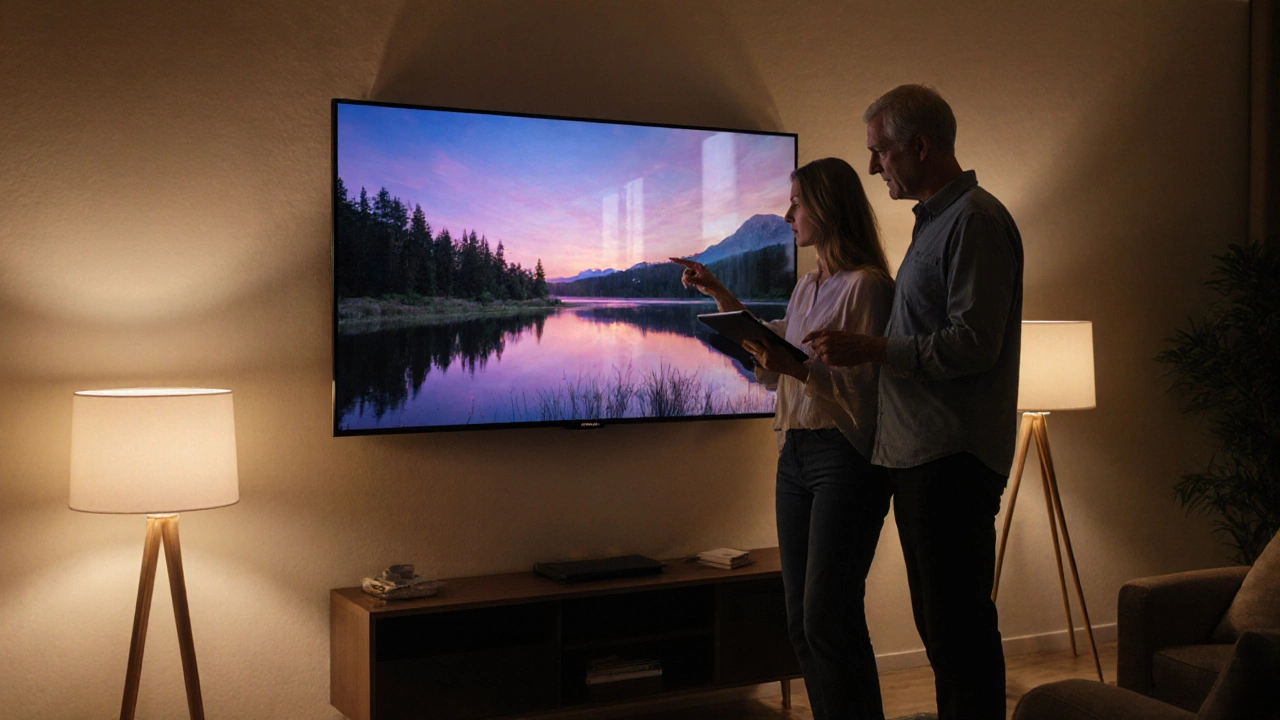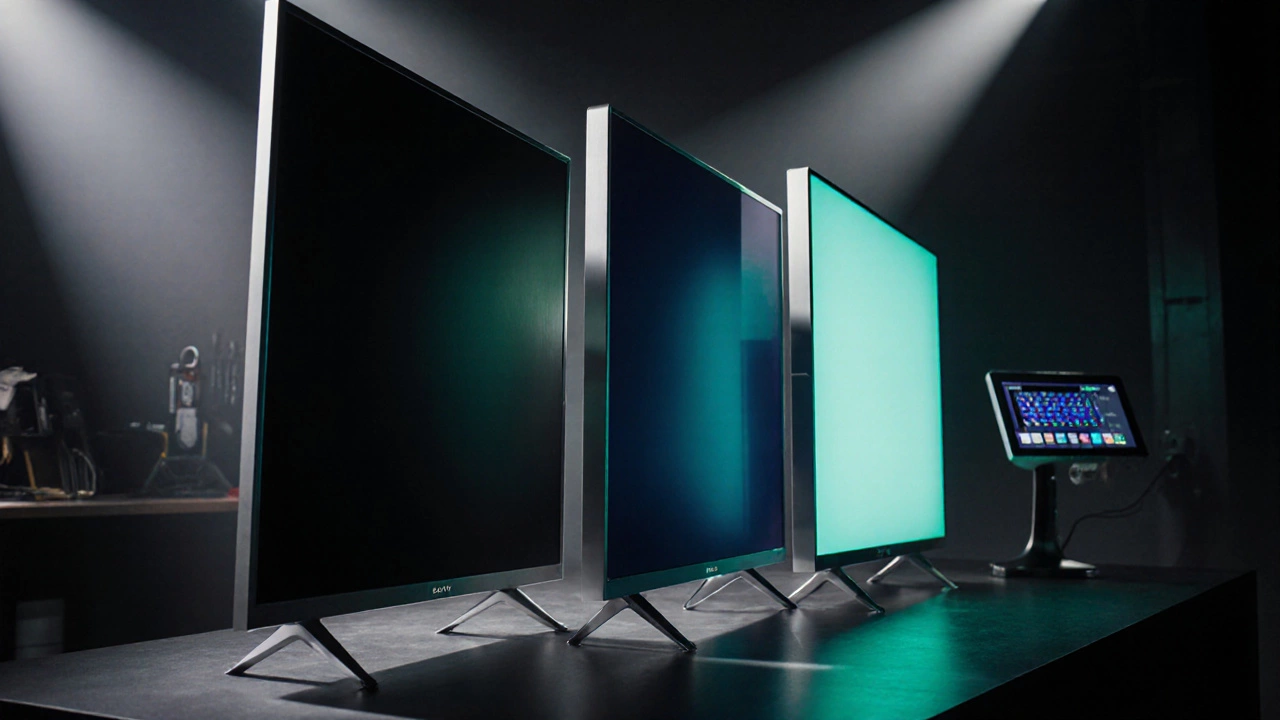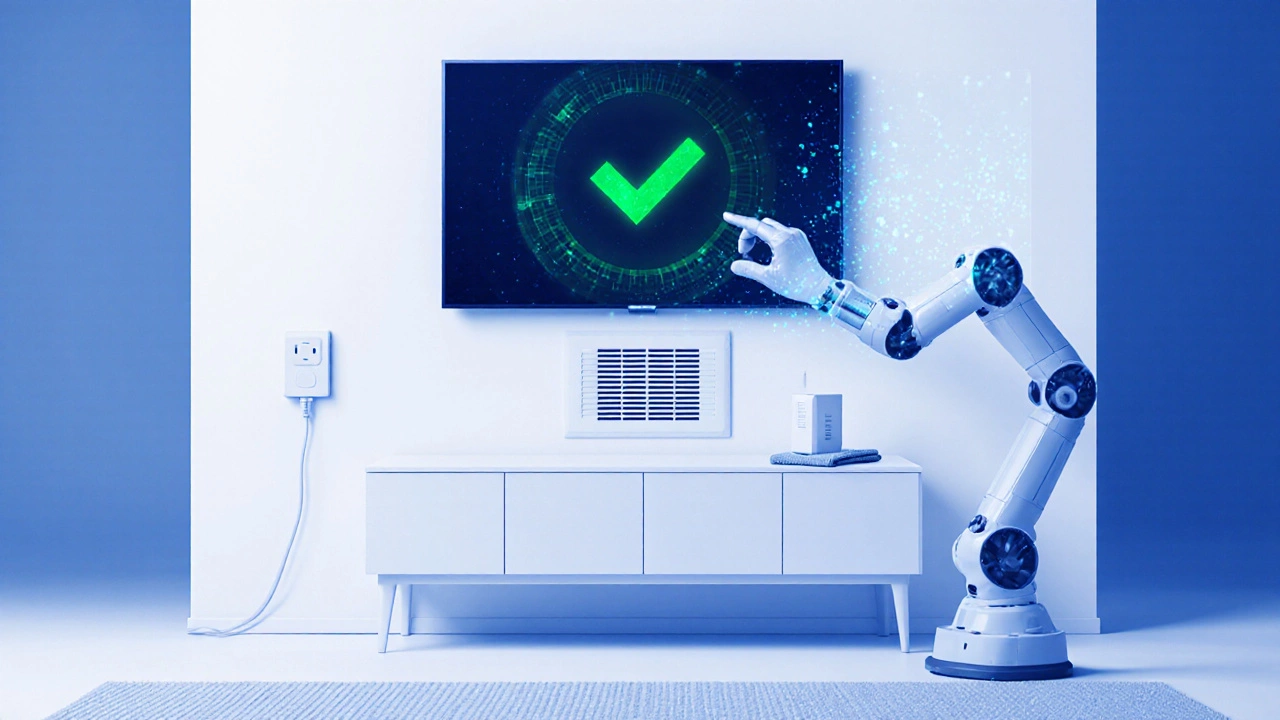
TV Reliability Cost Calculator
Calculate Your TV's Lifetime Reliability Costs
Input your usage patterns to see estimated repair costs and reliability rankings for 4K TVs.
Estimated Reliability Costs
Recommended Brands
Top Choice
$0Sony
Lowest failure rate
Best Value
$0LG
OLED performance
Budget Pick
$0Vizio
Acceptable reliability
Why This Matters
For every $100 spent on premium brands like Sony, you save $30-$50 in expected repair costs over 5 years. With your usage pattern, Sony would cost $0 in repairs while budget brands like TCL could cost $210.
When you’re hunting for a new 4K television is a high‑resolution TV that delivers four times the detail of full‑HD, the first thing that comes to mind is usually picture quality, size, or price. But once it’s on the wall, the real test is how often it stops working. A TV that spends weeks in the repair shop defeats the whole purpose of a premium home cinema.
How to Measure TV Reliability
Before we rank brands, let’s agree on the metrics that actually matter:
- Failure rate - number of units that experience a major defect per 1,000 sold, usually reported by Consumer Reports or JD Power.
- Mean time between failures (MTBF) - average operating hours before a critical issue surfaces.
- Warranty claims - how many owners file a claim during the standard 1‑year warranty period.
- Repair cost - average out‑of‑pocket expense after the warranty expires.
- Software stability - frequency of firmware updates that fix bugs versus introducing new ones.
These figures come from a blend of consumer surveys, manufacturer service data, and independent reliability studies conducted in 2023‑2025.
2025 Reliability Data Snapshot
Here’s what the latest numbers look like for the most common 4K TV brands in the U.S. market:
| Brand | Failure Rate (per 1,000) | MTBF (hours) | Warranty Claims (%) | Avg. Repair Cost ($) |
|---|---|---|---|---|
| Samsung | 7.2 | 27,800 | 3.1 | 180 |
| LG | 6.8 | 29,500 | 2.9 | 170 |
| Sony | 5.9 | 31,200 | 2.2 | 160 |
| TCL | 9.4 | 24,100 | 4.3 | 210 |
| Hisense | 10.1 | 22,800 | 4.7 | 220 |
| Vizio | 8.6 | 25,300 | 3.6 | 190 |
| Panasonic | 7.9 | 28,000 | 3.0 | 175 |
Notice that Sony tops the list with the lowest failure rate and the longest MTBF, while Hisense and TCL show the highest defect numbers. These numbers alone tell a story, but we also need to understand why they differ.
Why Some Brands Have Fewer Problems
Reliability isn’t magic; it comes from design choices, supply‑chain quality, and post‑sale support. Here’s a quick rundown of the key factors behind the numbers above:
- Panel technology - OLED panels (used heavily by LG and Sony) tend to have fewer dead pixels than cheaper LED modules, but they can suffer from burn‑in if static images stay too long.
- Processor quality - Samsung’s T‑Series chips get regular firmware updates, reducing software glitches that cause random reboots.
- Component sourcing - Brands that source capacitors from reputable manufacturers (like Sony) see fewer sudden power‑fail events.
- Manufacturing standards - Tight factory QA, especially in South Korean plants, correlates with lower warranty claims.
- Customer service network - A robust service network shortens repair times, which can lower the perceived failure rate measured by surveys.
When you combine these variables, you get the reliability picture we see in the table.

Best 4K TV Brands for Different Priorities
Now that we have the raw data, let’s translate it into actionable choices. Pick the brand that aligns with your biggest concern.
- Lowest overall problems - Sony. Its 5.9 per 1,000 failure rate and 31,200‑hour MTBF make it the safest bet for long‑term peace of mind.
- Best value with solid reliability - LG. Slightly cheaper than Sony, it still offers a sub‑7 failure rate and strong OLED performance.
- Most reliable LED/QLED option - Samsung. Its QLED panels combine high brightness with a respectable 7.2 failure rate.
- Budget‑friendly with acceptable risk - Vizio. The failure rate sits in the middle, but price points are often 20‑30% lower than premium brands.
- Avoid if you want minimal hassle - Hisense and TCL. Their higher defect numbers suggest you may spend more time on repairs.
Checklist: Picking a Reliable 4K TV
- Confirm the brand’s 2024‑2025 failure rate is under 8 per 1,000.
- Look for at least a 2‑year manufacturer warranty; some premium models extend to 3 years.
- Check if the TV receives regular firmware updates (Samsung and Sony are leaders).
- Read user reviews on trusted sites like Consumer Reports, not just Amazon star ratings.
- Consider a local service center’s reputation - quicker repairs mean less downtime.

Tips to Extend Your TV’s Lifespan
Even the most reliable TV can develop problems if you treat it poorly. Follow these simple habits:
- Enable automatic firmware updates - Most smart TVs now support OTA updates that fix bugs before they become noticeable.
- Avoid static images for long periods - Use screensavers or channel‑change timers to prevent OLED burn‑in.
- Use a surge protector - Power spikes are a common cause of sudden failures, especially in older homes.
- Don’t overcrowd ventilation - Keep the back of the TV clear; overheating accelerates component wear.
- Calibrate picture settings wisely - Extreme brightness can shorten LED lifespan; a moderate setting balances picture quality and longevity.
What the Future Holds for TV Reliability
Manufacturers are already investing in AI‑driven diagnostics that can alert you to hardware wear before a full‑blown failure. Expect next‑generation panels (Mini‑LED, Micro‑LED) to have even lower defect rates thanks to better thermal management.
For now, the data is clear: Sony, LG, and Samsung dominate the reliability rankings, while Hisense and TCL lag behind. Choose a brand that matches your budget and risk tolerance, and follow the checklist above to keep your 4K television humming for years.
Frequently Asked Questions
Which 4K TV brand has the lowest failure rate in 2025?
Sony leads with a 5.9‑per‑1,000 failure rate, making it the least problematic 4K TV brand this year.
Do OLED TVs have more issues than LED/QLED?
OLED panels can suffer from burn‑in if static images remain too long, but overall they have fewer dead‑pixel failures than cheaper LED panels. The key is proper usage.
How important is the warranty length when picking a TV?
A longer warranty (2‑3 years) gives you extra protection against early defects and often includes free in‑home service, which can save you money and hassle.
Can firmware updates actually reduce hardware failures?
Yes. Updates fix software bugs that can cause random reboots, overheating, or power‑supply stress, indirectly lowering the chance of hardware wear.
Is it worth paying extra for a premium brand’s reliability?
If you plan to keep the TV for 7‑10 years, the lower failure rate and better support of premium brands often offset the higher upfront cost.